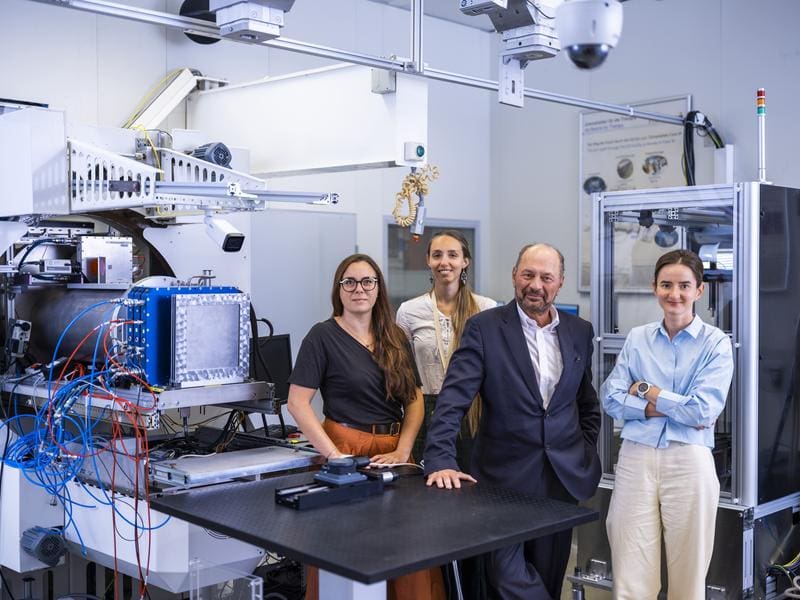Breakthrough in tumor therapy: First treatment with radioactive ion beams
A groundbreaking advance in cancer therapy was achieved with the first successful treatment of a tumor in an animal using radioactive ion beams. The project “BARB ŌĆō Biomedical Applications of Radioactive ion Beams”, funded by the European Research Council (ERC) with an Advanced Grant and led by Prof. Marco Durante from the GSI Helmholtz Centre for Heavy Ion Research in Darmstadt, has reached this milestone. The results, published in Nature Physics, mark a decisive step in the further development of particle therapy.
The study, which was conducted in close collaboration with the Ludwig Maximilian University of Munich (LMU) under Prof. Katia Parodi and the APPA and NuSTAR research pillars of the FAIR program, uses radioactive ion beams (RIB) simultaneously for tumor treatment and real-time imaging. This innovative concept reduces range uncertainty, one of the greatest challenges of particle therapy, and enables more precise irradiation. Although the idea was born almost 50 years ago at the Lawrence Berkeley Laboratory, it only became feasible through the intense beams during the “FAIR Phase 0” at GSI/FAIR.

The researchers successfully treated osteosarcoma in the neck region of a mouse with a radioactive carbon ion beam (11C), which emits positrons with a half-life of about 20 minutes. The tumor was close to the spinal cord, where deviations of a few millimeters can cause severe damage. With a radiation dose of 20 gray, complete tumor control was achieved without neurological side effects. A key instrument was a high-resolution in-beam PET scanner developed at LMU in collaboration with the laboratory of Prof. Taiga Yamaya (QST-Chiba). Originally designed as part of the ERC project “SIRMIO”, the scanner for BARB has been further developed to enable radiation detection in real time.
Precise imaging during radiation greatly improves the accuracy of particle therapy. This could revolutionize the treatment of metastases, tumors near critical structures or non-cancerous diseases such as cardiac arrhythmias. Future experiments on the Super-FRS fragment separator, which is currently being built at FAIR, are expected to further increase the intensity of the radioactive radiation and prepare the method for clinical applications. The results of BARB also form the basis for Prof. Durante’s new ERC project “Heavy Ion FLASH (HI-FLASH)”, which investigates ultrafast irradiation techniques.
The study shows how applied nuclear physics can advance medicine. Through the interdisciplinary collaboration of GSI/FAIR, LMU and international partners, a groundbreaking approach has been developed that could make tumor therapy more precise, safer and more effective.
Original Paper:
Image-guided treatment of mouse tumours with radioactive ion beams | Nature Physics
Editor: X-Press Journalistenb├╝ro GbR
Gender Notice. The personal designations used in this text always refer equally to female, male and diverse persons. Double/triple naming and gendered designations are used for better readability. ected.




